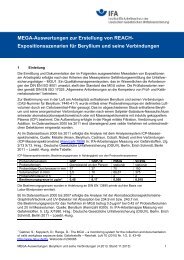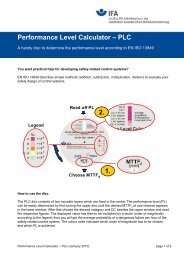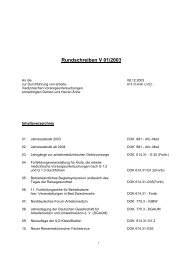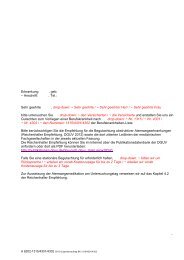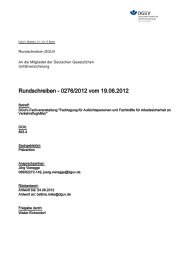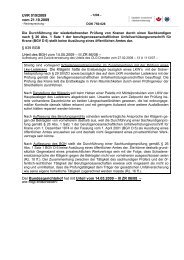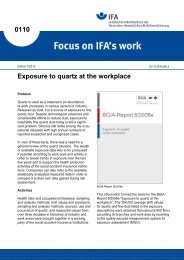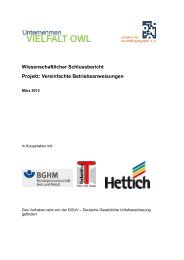Effectiveness of measures to prevent needlestick injuries among ...
Effectiveness of measures to prevent needlestick injuries among ...
Effectiveness of measures to prevent needlestick injuries among ...
Create successful ePaper yourself
Turn your PDF publications into a flip-book with our unique Google optimized e-Paper software.
Annex 3: Definitions/guidelines for reviewing articles<br />
c) Any obvious bias in data collection methods (y/n): Was injury reporting active<br />
or passive (voluntary)? Was there likely <strong>to</strong> be pressure on the participants <strong>to</strong><br />
over or under report?<br />
6) Duration <strong>of</strong> intervention and follow-up<br />
a) For all designs, duration <strong>of</strong> intervention is interval in which new<br />
equipment/procedure was in use<br />
b) Duration <strong>of</strong> follow-up<br />
i) Concurrent comparison – follow-up is the same as intervention interval,<br />
since intervention and control groups are observed for the same amount <strong>of</strong><br />
time.<br />
ii) Cross-over: duration <strong>of</strong> follow-up is sum <strong>of</strong> intervention and non-<br />
intervention periods.<br />
iii) For pre/post design, follow-up is pre plus post<br />
iv) For external comparison and for ecological studies, duration <strong>of</strong> follow-up is<br />
the time during which injury data were collected in the study population.<br />
7) Study characteristics<br />
a) Target population, intervention predetermined − Can only be true when the<br />
study was planned before the interventions were implemented.<br />
b) Measures <strong>of</strong> successful program pre-determined − The author described what<br />
results should be attained in order <strong>to</strong> deem the study a success (e. g. overall<br />
reduction in NSI). If a quantitative estimate was provided (as would be used for<br />
a power calculation), please make a note on the form.<br />
c) Pre-testing <strong>of</strong> new <strong>to</strong>ols means some staff were involved in selecting the devices<br />
prior <strong>to</strong> their general introduction or implementation <strong>of</strong> intervention<br />
d) Passive surveillance requires voluntary reporting <strong>of</strong> events (<strong>injuries</strong>), e. g. using<br />
injury report forms.<br />
Report „Needlestick <strong>injuries</strong>“ 112





